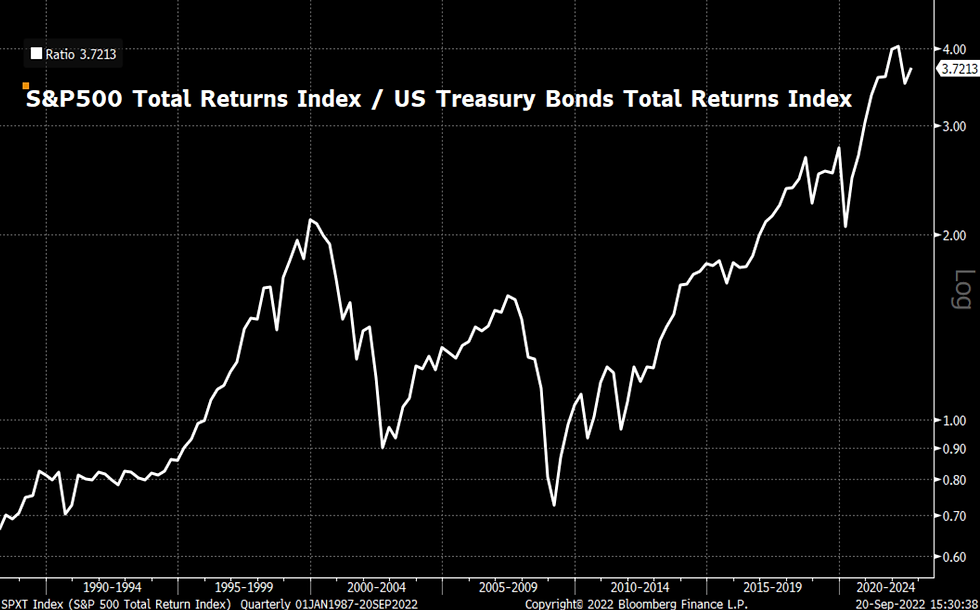If You’re Used To Stocks Outpacing Bonds, It’s Time To Adjust Your Thinking
- Vavio.io

- Sep 20, 2022
- 2 min read

US stocks have trounced US Treasury bonds since the global financial crisis. But that’s likely coming to an end: with a sharp slowdown in global growth likely just around the corner, it’s starting to look like bonds’ time to shine.
This chart shows how stocks have performed, relative to Treasuries, since the late 1980s. When the line is going up, stocks are generating higher total returns than Treasuries. When it’s going down, the reverse is true.
Here’s the thing: when monetary conditions are accommodative (i.e. when interest rates are low) and the economic outlook is promising, return-seeking investors tend to dump low-risk Treasury bonds in favor of higher-octane stocks. This tends to boost the price of stocks relative to that of bonds, and explains why stocks outperformed bonds by so much in the 1990s, and through much of the period since the financial crisis (with the exception of the Covid crash in 2020). But when monetary conditions become less accommodative (i.e. when interest rates are rising), the resulting slowdown in growth can often tip the economy into a recession, causing Treasuries to become more attractive than stocks, because of their relative safety and their more attractive interest rate. In this environment, Treasury bonds outperform stocks.
Right now, we are likely transitioning from an environment that favors stocks to one that favors bonds. Investors already are pocketing a more attractive interest rate on Treasuries, and that investment is poised to benefit further if the Fed’s rate hikes do tip the economy into a recession. In that environment, stocks would likely be hit harder than bonds, clobbered by lower earnings growth and from a shift in investor sentiment. And, looking a bit further out, if a fall in economic activity is enough to push inflation to a level that’s low enough for the Fed to cut rates again, then Treasury bonds might really come back with a vengeance.
This could matter to your portfolio: as we recently explained, now might not be a bad time to rotate some of your stocks into Treasury bonds.














Comments